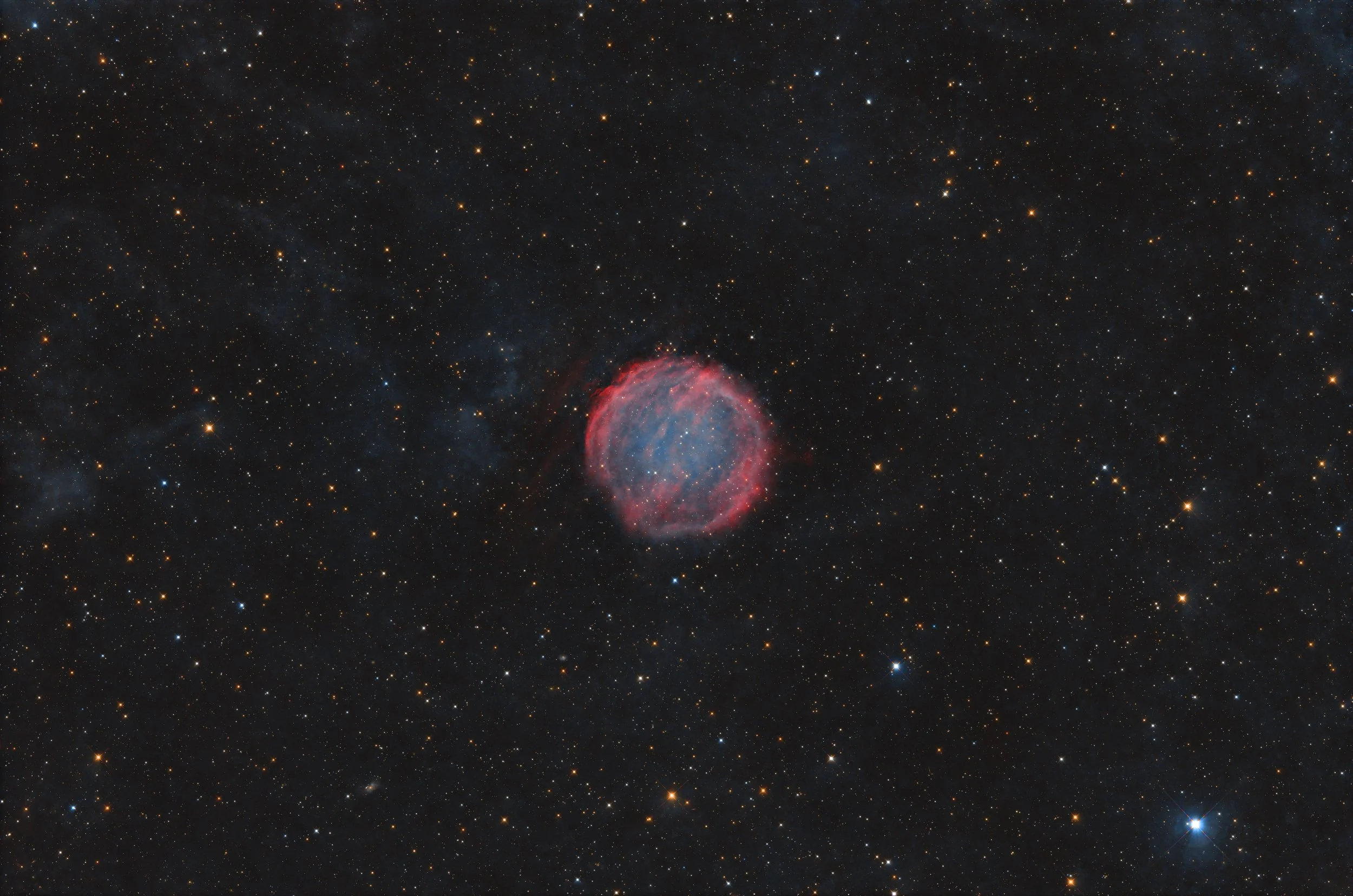PuWe 1 or PN G158.9+17.8 in HOO with LRGB Stars
Image Title: PuWe 1 or PN G158.9+17.8 in HOO with LRGB Stars
Copyright: Herfried Exl
Date image was taken: December 18, 2023
Location: Geschreibenstein in Austria (803m)
Image Description and Details: PuWe 1 or PN G158.9+17.8 is a quite large but very, very faint planetary nebula in the constellation Lynx.
The nebula was discovered in 1980 (original discovery paper: http://goo.gl/fW6TQB) by Purgathofer and Weinberger from the Palomar Deep Sky Survey images. The nebula is one of the largest planetary nebulae visible in our sky, with a diameter almost as large as the full moon!
PuWe 1 is also one of the closest known PNs, at a distance of only about 1200 light years. It shines very faintly in the wavelengths H-alpha and OIII. In Ha it has an estimated surface brightness of only 23.7 mag/arcsecond and in OIII only 26.3 mag/arcsecond. The integrated brightness levels are 8.6 and 11.2 respectively. This means that you can imagine the PN as a star with magnitude 8.6. Which is defocused on the size of the moon. This is an indication of the incredible weakness of the PN. The PN is estimated to be about 4 light-years in diameter and is therefore likely to be a very old remnant of a planetary nebula that has expanded to the point where the remaining gases from the central star are only weakly energized.
Recorded on December 18th, 2023 at Geschreibenstein in Austria.
Designed in HOO with LRGB stars.
Tools used: PI and PS. & N.I.N.A.
Exposure and filters: Red 22x90sec., Green 20x90sec., Blue 20x90sec., Lum 27x60sec., Ha 18x900sec. OIII 15x900sec.
Total exposure time: 10h 15min.
Equipment Details: Takahashi Epsilon 160ED, QHY268M, QHYCFW3, Ioptron iEQ45, Lacerta MGEN2, Lacerta MFOC2, Baader LRGB, (Ha and OIII 6.5nm f/2), CMOS optimized filter.
Elaboration from December 20, 2023 (c) Herfried Exl
AAPOD2 Title: PuWe 1 or PN G158.9+17.8 in HOO with LRGB Stars
AAPOD2 Page Link: https://www.aapod2.com/blog/puwe-1-or-pn-g1589178-in-hoo-with-lrgb-stars
Submit Your Photo!

